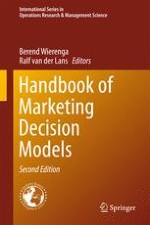2017 | OriginalPaper | Buchkapitel
2. Sales Promotion Models
verfasst von : Harald J. van Heerde, Scott A. Neslin
Erschienen in: Handbook of Marketing Decision Models
Aktivieren Sie unsere intelligente Suche, um passende Fachinhalte oder Patente zu finden.
Wählen Sie Textabschnitte aus um mit Künstlicher Intelligenz passenden Patente zu finden. powered by
Markieren Sie Textabschnitte, um KI-gestützt weitere passende Inhalte zu finden. powered by
